How ABA Therapy Helps Children Develop Self-Regulation Skills in School
Unlocking Self-Regulation in Students through ABA Therapy
Introduction to the Role of ABA in Self-Regulation
Applied Behavior Analysis (ABA) therapy is a well-established approach that significantly enhances children’s ability to develop self-regulation skills in school settings. This form of therapy plays a crucial role, especially for children with Autism Spectrum Disorder (ASD), by equipping them with techniques to manage their emotions, behaviors, and social interactions in educational environments. Through ABA, children gain essential skills that not only improve their academic performance but also foster independence and better social relationships.
Understanding the Benefits of ABA Therapy in Schools
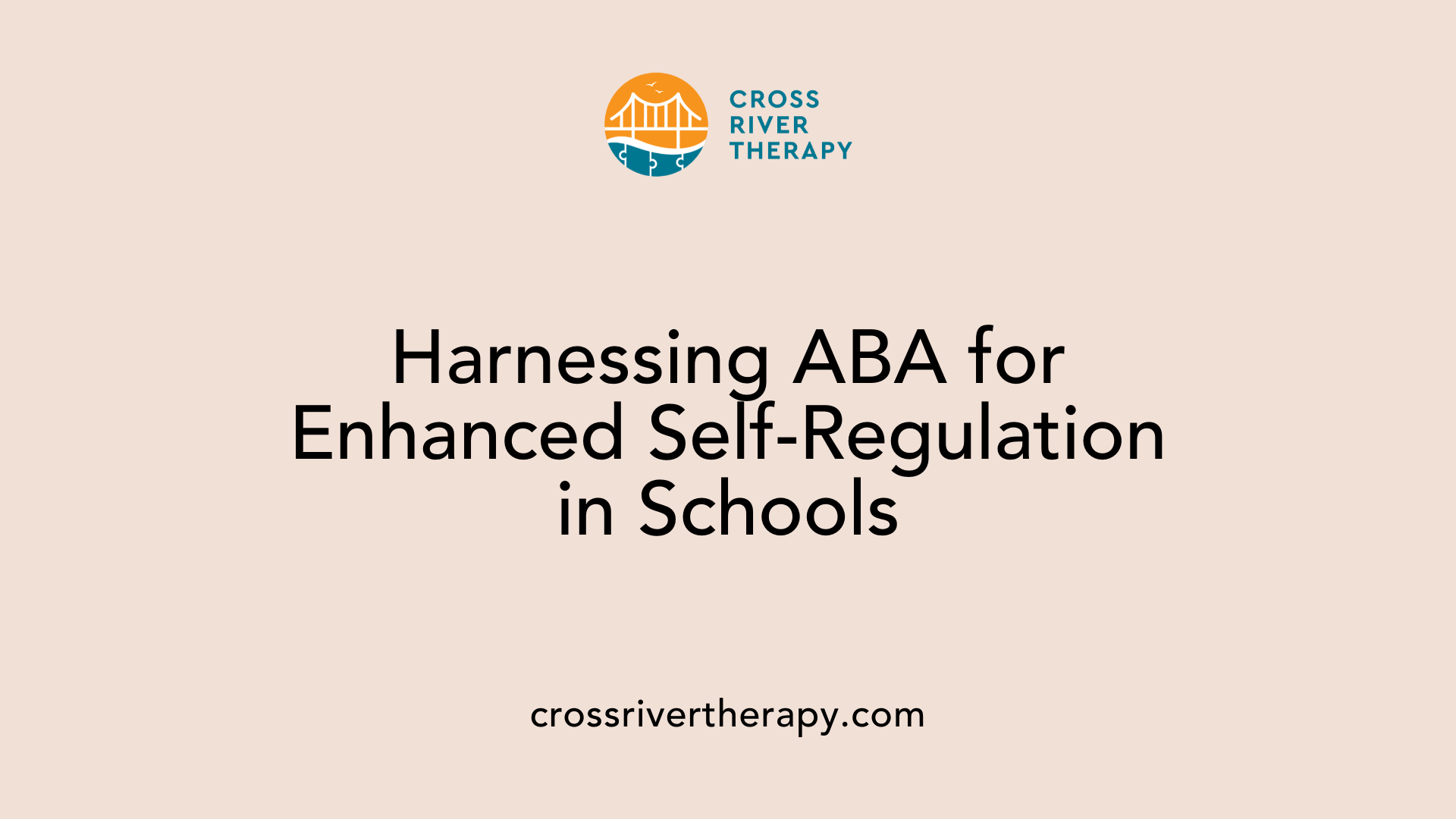
What are the benefits of ABA therapy in developing self-regulation skills in children within a school context?
ABA therapy offers numerous benefits in developing self-regulation skills in children within a school context. Its individualized approach tailors interventions to each child's unique needs, enhancing engagement and effectiveness. This customization is crucial for addressing specific behavioral challenges and fostering skill development.
Individualized interventions
Through individualized treatment plans, ABA therapists create strategies that are relevant to each child's developmental goals, helping them manage emotions and behaviors effectively. By focusing on specific challenges, such as impulse control or emotional triggers, children learn to handle various situations more adeptly in the classroom environment.
Positive reinforcement
Positive reinforcement is a fundamental principle of ABA therapy. It encourages children to repeat desirable behaviors by rewarding them for self-regulation. For instance, children might be reinforced when they successfully manage their emotions during stressful situations. This method not only promotes the desired behavior but also helps children feel motivated and confident in their ability to self-regulate.
Social-emotional skill development
Enhancing social-emotional skills is another critical outcome of ABA therapy. Through role-playing and modeling, children learn crucial skills like communication, emotional regulation, and peer interaction. These skills not only facilitate smoother class interactions but also aid in building friendships and resolving conflicts peacefully, significantly contributing to their overall academic success and social well-being.
How ABA Supports Emotional and Behavioral Management
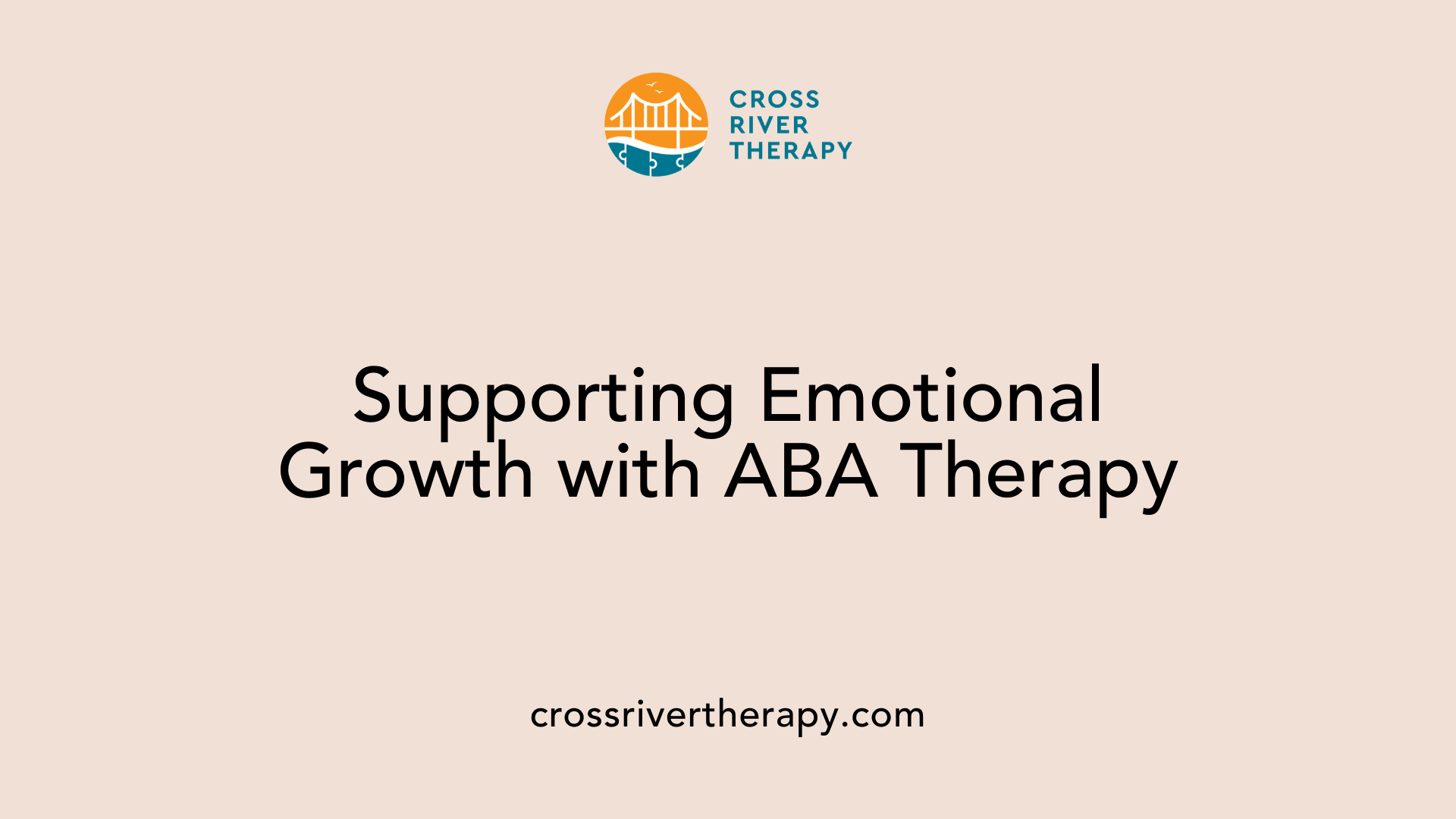
How does ABA therapy aid children, particularly those with autism, in managing emotions and behaviors in academic settings?
ABA therapy provides vital support to children with autism by establishing individualized behavior plans designed around their unique emotional and behavioral needs. Each plan is tailored to address specific challenges that a child may face in an academic environment, ensuring that the strategies employed are relevant and effective.
One of the significant focuses of ABA therapy is enhancing communication skills. By helping children learn to express their emotions verbally and non-verbally, they can engage more effectively with peers and teachers. This improved communication reduces frustration and misunderstandings, fostering a more inclusive classroom setting.
Furthermore, ABA emphasizes the development of social skills. Children learn critical social behaviors such as turn-taking and sharing, which enhances their ability to interact appropriately in various academic settings. These skills contribute to better peer relationships and a collaborative classroom environment.
Positive Reinforcement Strategies in ABA
Positive reinforcement is a cornerstone of ABA therapy. It encourages students to exhibit desirable behaviors by rewarding them for successfully managing their emotions and completing tasks effectively. For instance, a child might receive praise or a small reward for following directions or managing to stay calm during a stressful activity.
Individualized strategies, such as using emotion charts, can also play a crucial role. These tools help children identify and articulate their feelings, which further supports emotional regulation. Techniques like structured routines and movement breaks can be integrated into the classroom to maintain focus and reduce anxiety during transitions.
In summary, ABA therapy lays the groundwork for self-regulation by promoting emotional awareness and offering practical solutions for managing behavior, ultimately leading to enhanced relationships and academic success.
Techniques and Strategies for Promoting Self-Regulation
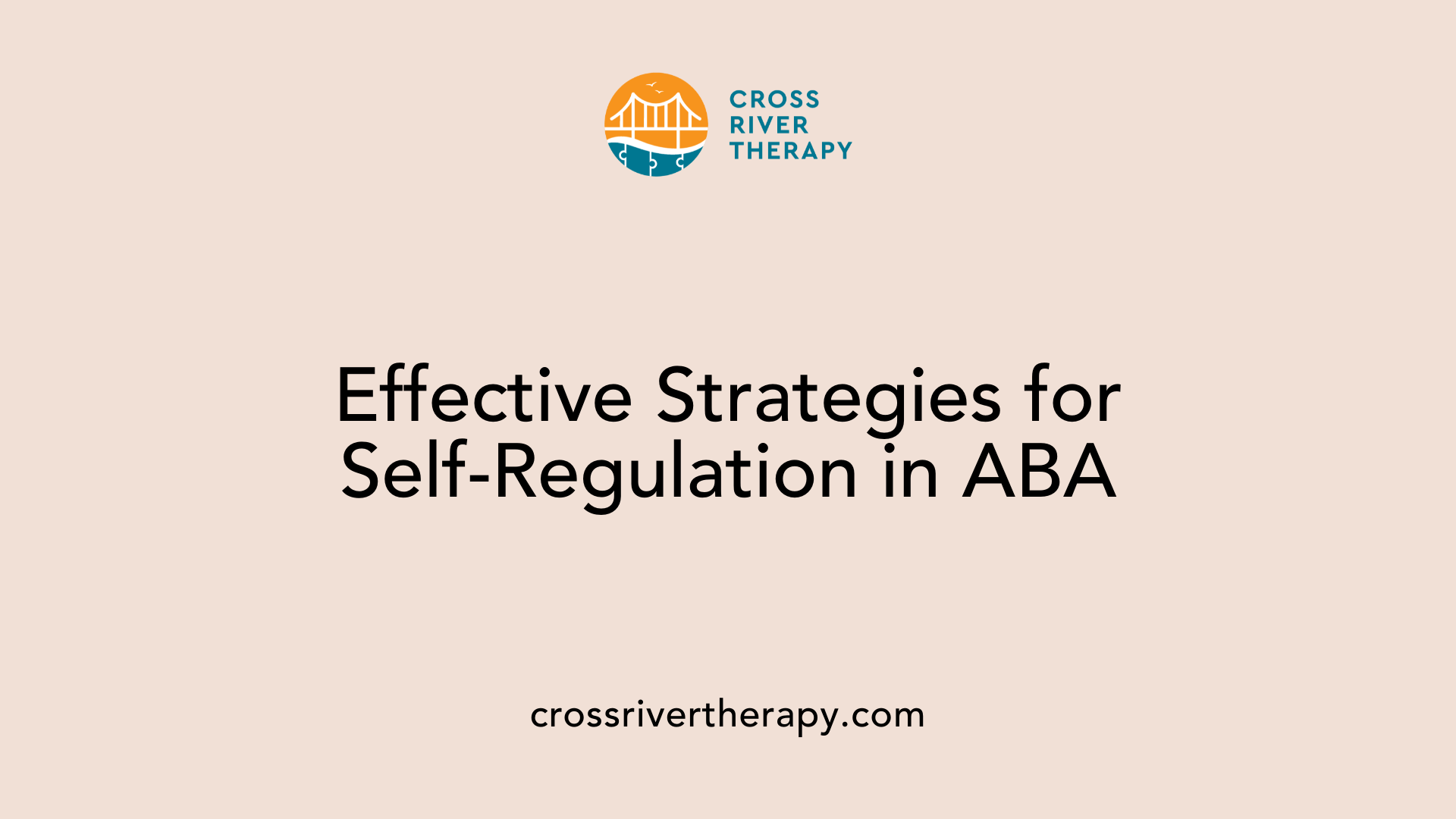
What techniques and strategies are used in ABA therapy to promote self-regulation?
ABA therapy employs a range of techniques and strategies designed to boost self-regulation among children, particularly those with autism. Here are some of the prominent methods utilized:
Positive Reinforcement: Encouraging desired behaviors by rewarding children when they successfully manage their emotions or behaviors.
Task Analysis: Breaking down complex tasks into smaller, manageable steps, which helps children learn to follow routines and complete tasks effectively.
Prompting and Modeling: Offering cues or demonstrations to help children understand how to conduct themselves in various situations.
The S.C.A.R.E.D. Calming Technique: Focusing on skills to recognize triggers and de-escalate potential meltdowns, which supports emotional regulation.
Zones of Regulation Curriculum: This structured, color-coded system assists children in identifying their emotional states and learning strategies to regulate those emotions.
Self-management interventions
Self-management interventions are essential in promoting independence. Techniques such as goal setting and self-monitoring allow children to take charge of their actions, fostering greater self-awareness and responsibility in social contexts. This approach not only sharpens self-regulation skills but also enhances social interactions, which are vital for academic and social success.
Emotion regulation
Incorporating emotional regulation strategies, including cognitive-behavioral techniques and mindfulness practices, is instrumental in helping children process their feelings. These strategies can improve emotional understanding, allowing children to manage their responses more effectively in school environments, thereby contributing to better behavior and peer relationships.
| Technique/Strategy | Description | Benefits |
|---|---|---|
| Positive Reinforcement | Rewarding positive behaviors | Encourages repetition of good behavior |
| Task Analysis | Breaking down tasks into steps | Simplifies learning process |
| S.C.A.R.E.D. Calming Technique | Helps in recognizing and managing triggers | Reduces likelihood of meltdowns |
| Zones of Regulation | Structured system for emotional identification | Improves emotional self-awareness |
| Self-management interventions | Goal setting and self-monitoring | Fosters independence |
Connecting Self-Regulation to Academic Success
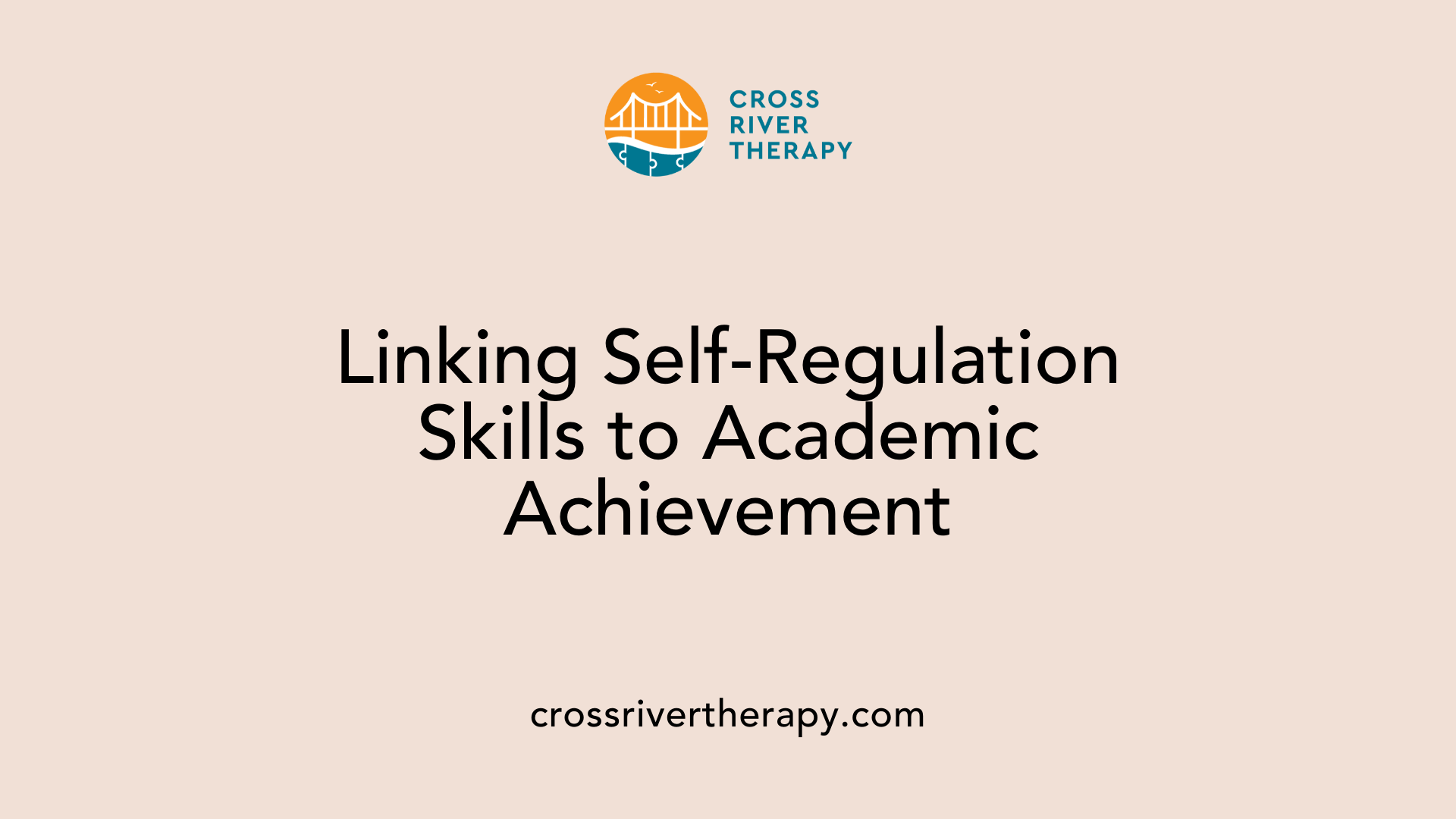
What is the relationship between ABA therapy and academic success through the development of self-regulation skills?
The relationship between ABA therapy and academic success is deeply intertwined with the ability to develop self-regulation skills, which are essential for effective learning. Integrating ABA therapy in schools means providing students with consistent support, fostering generalization of these crucial skills across different environments. This enhances not only academic performance but also social inclusion.
Personalized learning plans created using ABA principles cater to each student's specific requirements. These tailored approaches lead to better academic outcomes by addressing the individual needs and challenges faced by students, particularly those with autism. By focusing on self-regulation, children learn to manage their emotions, improve communication, and interact more effectively with peers and teachers.
How do collaborative efforts support this development?
Collaboration is key to the effective implementation of ABA therapy strategies. Collaborative efforts among educators, behavior analysts, therapists, and parents ensure that everyone aligns on goals and approaches that promote student success. When all parties work together, they create a consistent environment where students can thrive academically and socially.
What role does data monitoring play in this process?
Data monitoring is integral to the systematic application of ABA strategies. It allows educators and therapists to track progress, evaluate the effectiveness of interventions, and adjust techniques as needed. By continuously assessing student development, educators can ensure that self-regulation skills are being effectively taught and reinforced, thereby improving both academic skills and essential communication competencies essential for a positive school experience.
| Topic | Description | Importance |
|---|---|---|
| Generalization of skills | Ensures students apply self-regulation skills in various settings | Enhances adaptability |
| Collaborative efforts | Involves team members in aligning goals and strategies | Promotes consistent support |
| Data monitoring | Tracks progress, evaluates strategies, and adjusts interventions as needed | Ensures effective learning outcomes |
Individualized Approaches for Enhanced Communication and Behavior
How are individualized approaches in ABA therapy used to foster communication and behavior management in school?
Individualized approaches in ABA therapy are tailored specifically to the unique needs of each student, especially those with Autism Spectrum Disorder (ASD). This tailored intervention begins with a comprehensive assessment to identify specific challenges and strengths, allowing therapists to devise targeted strategies focused on enhancing communication skills while effectively managing behaviors that may disrupt learning.
Key Techniques Utilized in Individualized ABA Approaches
- Discrete Trial Training (DTT): This structured teaching technique provides prompts and reinforcement, making it easier for children to learn specific skills, such as following instructions or responding to questions.
- Naturalistic Teaching: This method encourages learning through play and real-life interactions, allowing for a more engaging experience that reinforces social and communication skills.
Collaborative Efforts for Effective Support
Collaboration among ABA therapists, educators, and parents is essential. This partnership helps ensure that the interventions implemented in the classroom align with strategies used at home, creating a seamless support system that enhances the student’s educational experience. By working together, stakeholders can share insights and adjust practices, fostering a responsive and inclusive learning environment.
In conclusion, these individualized strategies are not only integral to promoting effective communication and behavior management but also lead to improved academic and social outcomes for students within school settings.
Enhancing Social Interactions and Independence through ABA
What are the effective methods and outcomes of ABA therapy in enhancing children's social interactions and independence in educational environments?
Effective methods of ABA therapy to boost children's social interactions and independence involve several strategies.
Behavioral Skills Training
- Personalized Interventions: Therapists create tailored plans based on each child's needs.
- Skill Breakdown: Complex social skills are divided into manageable actions, making them easier to learn.
- Positive Reinforcement: Encouraging desirable behaviors by rewarding children helps promote their engagement and overall success in learning new skills.
Role-Playing
- Simulating Social Scenarios: Through role-playing, children practice initiating conversations and responding to social cues, fostering real-life application.
- On-the-Spot Feedback: Therapists provide immediate feedback during these sessions, which enhances learning by correcting behaviors in real time.
Collaboration with Educators
- Consistent Support: Working together with parents and teachers ensures that strategies are reinforced in multiple settings, facilitating greater skill retention.
- Progress Tracking: This team approach allows for monitoring children's advancements in a structured manner, making it easier to adjust interventions as needed.
Overall, research shows that ABA therapy significantly enhances social and emotional skills, enabling children to achieve greater independence and improve peer interactions within educational settings. Through consistent practice and support, children develop essential skills that last a lifetime.
Transition Planning to Support School Integration
Management of Schedules and Norms
Transition planning is a fundamental aspect of ABA therapy, especially for children with autism, as it prepares them for the structured environment of school. This includes helping them understand and adjust to new schedules, social norms, and classroom expectations. By systematically introducing changes, children are less likely to feel overwhelmed during significant transitions.
Developing Routines
Creating and reinforcing routines play a vital role in ensuring a smooth transition. Consistent daily schedules and clear expectations help children feel secure as they navigate the complexities of school life. ABA therapists work closely with parents and educators to develop personalized routines that fit each child's unique needs, fostering a sense of stability that enhances self-regulation.
Coping Strategies
Coping strategies are integral to helping children manage anxiety and stress during transitions. Techniques such as deep breathing exercises, sensory-friendly breaks, and mindfulness activities enable children to handle overwhelming situations more effectively. By learning these strategies through ABA therapy, children can more readily adapt to changes in their environment and routines.
Role of Transition Stories
Transition stories are powerful tools that visualize upcoming changes in a child’s routine. These stories illustrate what to expect during transitions, making it easier for children to comprehend and accept new situations. By unfolding each step, children can prepare mentally and emotionally, leading to a more positive outlook on their school experiences.
| Topic | Description |
|---|---|
| Management of Schedules | Helps children understand and adapt to school routines and norms. |
| Developing Routines | Reinforces stability through consistent daily schedules tailored to individual needs. |
| Coping Strategies | Teaches relaxation techniques to manage stress during transitions. |
| Role of Transition Stories | Provides visual and narrative support to help children anticipate and adjust to changes. |
Fostering Independence in Educational Environments
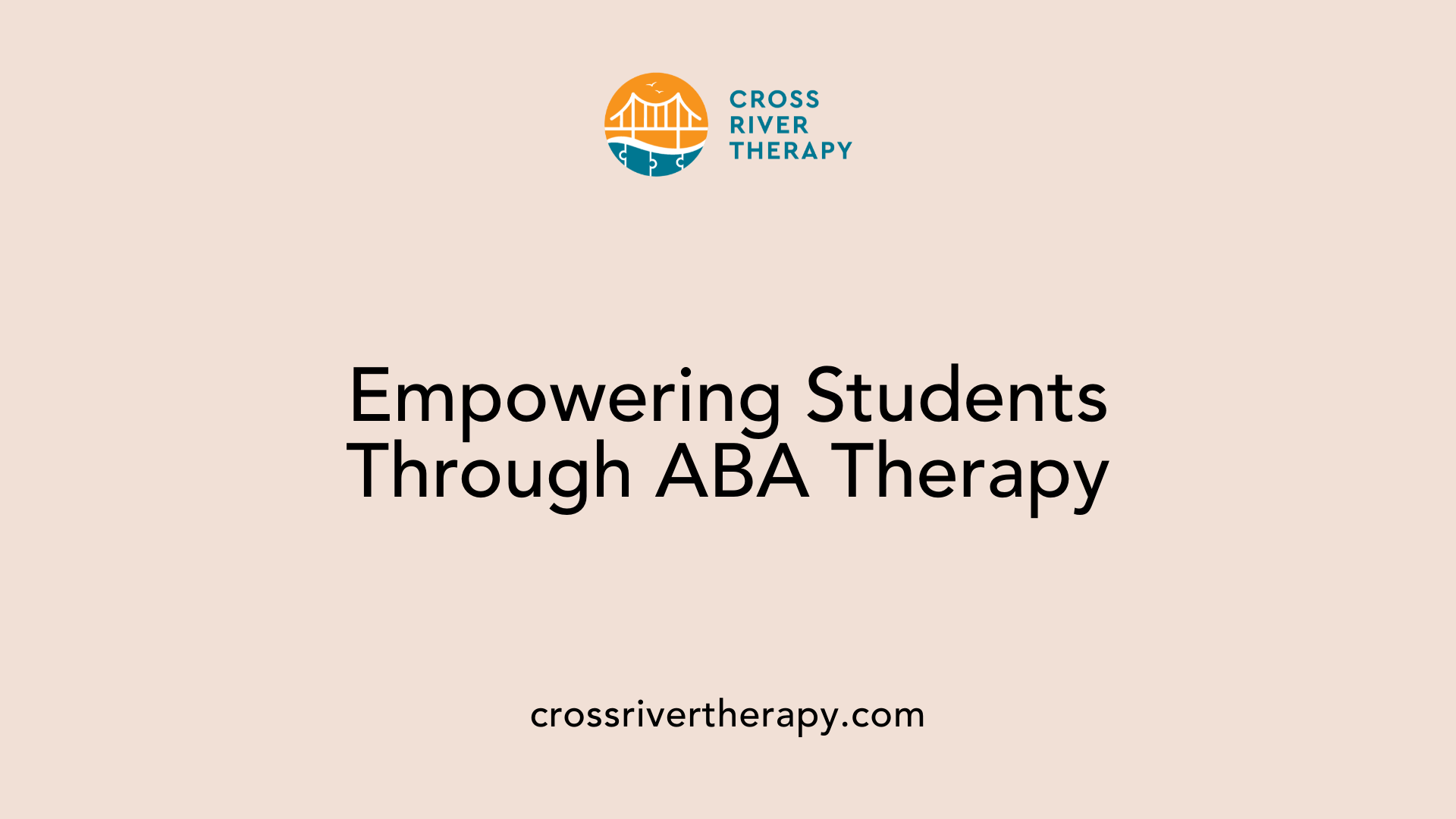
What role does self-advocacy training play in ABA therapy?
Self-advocacy training is an essential component of ABA therapy, particularly for children with autism. This training empowers students to express their needs and identify available resources within the school setting. By enhancing their ability to seek support, students experience a boost in confidence, which reinforces their independence in managing academic and social challenges.
How does ABA therapy enhance problem-solving skills?
ABA therapy systematically enhances problem-solving abilities in children by breaking down complex tasks into manageable steps. This method not only helps children tackle academic assignments with greater ease but also equips them with decision-making skills in social scenarios. This approach fosters independence and encourages children to think critically, ultimately helping them navigate various situations in school.
In what ways does ABA therapy address resource management?
Resource management is another focus area in ABA therapy, which incorporates teaching children how to effectively manage their time, materials, and emotional resources. Strategies may include utilizing planners for assignments, practicing organization skills, or implementing calming techniques during stressful times. These skills contribute to a child’s ability to function more independently, ensuring they can take charge of their educational journey.
| Focus Area | ABA Therapy Techniques | Benefits |
|---|---|---|
| Self-advocacy | Communication training, needs expression | Increased confidence and support-seeking |
| Problem-solving | Task breakdown, decision-making skills | Enhanced academic and social navigation |
| Resource management | Time management, organization strategies | Better autonomy in handling school tasks |
By incorporating these strategies, ABA therapy not only promotes self-regulation but also helps children with autism gain essential skills for a successful and independent school experience.
Concluding Thoughts on ABA and Self-Regulation in Schools
ABA therapy is integral to equipping children with the self-regulation skills needed to thrive academically and socially. By focusing on individualized interventions, positive reinforcement, and collaborative strategies, ABA supports children in overcoming challenges and achieving independence. As schools continue to adopt ABA methods, children will increasingly benefit from structured supports that enhance their ability to manage emotions, behaviors, and interactions, laying the groundwork for lifelong success.
References
- ABA Therapy in Schools: Improving Social Skills and Behavior
- How ABA Therapy Can Prepare Your Child with Autism For School
- How ABA Therapy Prepares Children for School Success
- School Readiness and Self-Regulation for Autism | AutismCOE
- ABA Therapy: Building a Strong Foundation for Growth
- Benefits of ABA Therapy for Children with Autism
- How ABA Therapy Can Support Your Child's Development



